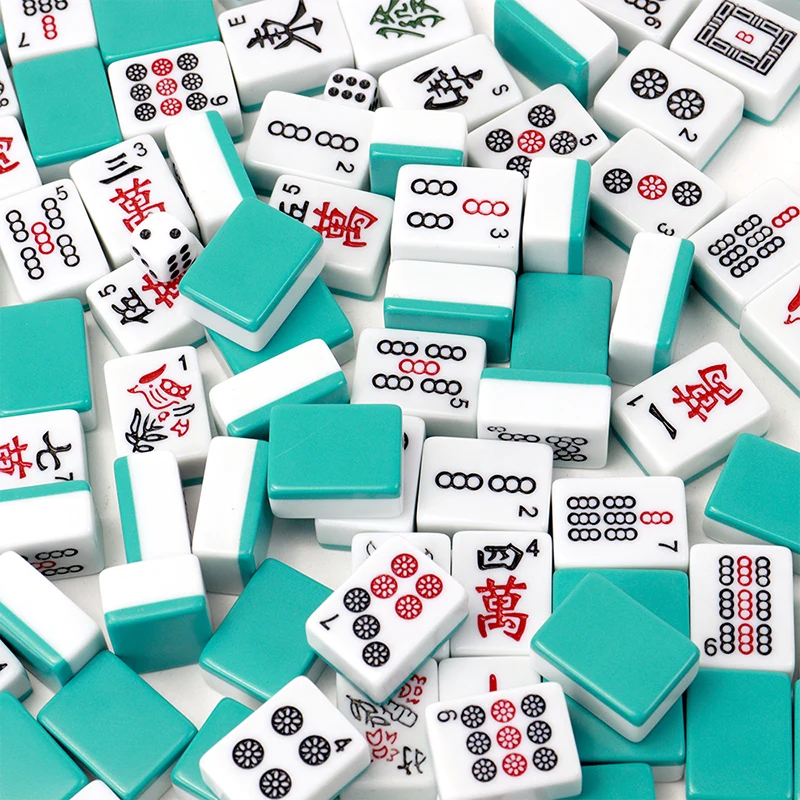How do you play mahjong?
2024-06-13
How to Play Mahjong: A Beginner's Guide
Mahjong is a traditional Chinese game typically played with four players. The game is rich in history and strategy, and it involves skill, strategy, calculation, and a bit of luck. Here is a basic guide to help you get started:

1. Understanding the Components
- Tiles: Mahjong is played with 144 tiles, which are divided into several categories:
- Suits: There are three suits (each with 36 tiles) - Bamboo, Characters, and Dots (or Circles). Each suit has tiles numbered 1 to 9, with four of each number.
- Honor Tiles: This includes Dragons (Red, Green, and White, with four of each) and Winds (East, South, West, and North, with four of each).
- Bonus Tiles: Flowers and Seasons, typically not used in the basic game.
- Setup: Each player starts with 13 tiles. Tiles are drawn from a wall of tiles, which is built at the beginning of the game.
2. Setting Up the Game
- Building the Wall: Each player builds a row of tiles two tiles high and 18 tiles long, forming a square wall.
- Dealing: Players roll dice to determine the dealer (East wind). The dealer shuffles the tiles and distributes 13 tiles to each player (14 tiles for the dealer).
3. Game Objective
The objective of Mahjong is to be the first to complete a legal hand, which typically consists of four melds (sets) and a pair. Melds can be:
- Pong: Three identical tiles.
- Chow: A sequence of three tiles in the same suit.
- Kong: Four identical tiles (usually declared and replaced with a tile from the wall).
4. Gameplay
- Drawing and Discarding: Players take turns drawing a tile from the wall or the discard pile and then discarding a tile. The goal is to improve your hand to form a complete set of tiles.
- Claiming Discards: If a player discards a tile that another player needs to complete a Pong, Chow, or Kong, the latter can claim the tile and reveal their meld. If claiming for a Chow, only the player immediately to the discarder's left can do so.
5. Winning the Game
- Mahjong (Winning Hand): A player calls "Mahjong" when they complete a legal hand of four melds and a pair (14 tiles total). They must declare their hand, and the game round ends.
6. Scoring
Scoring can vary significantly between different versions of Mahjong, but the basic idea involves:
- Points for Melds: Points are awarded for the types of melds (Pong, Chow, Kong) and the tiles involved.
- Bonus Points: Additional points can be awarded for certain conditions (e.g., winning with a self-drawn tile, having certain sets of tiles, or achieving special hands).
7. Common Rules and Variations
- Riichi (Japanese Mahjong): Involves additional rules and scoring complexity.
- Hong Kong/Cantonese Style: A popular version with simpler rules and scoring.
- American Mahjong: Uses a card showing the winning hands for that year, with unique tiles like jokers and more complex scoring.
Example Turn
1. Draw a Tile: Draw from the wall or claim a discard.
2. Check Hand: Determine if the drawn tile completes a meld or helps form a winning hand.
3. Discard a Tile: Choose a tile from your hand to discard that you don’t need.
4. Claiming: If another player needs the discarded tile, they can claim it to complete a meld.
Tips for Beginners
- Learn the Tiles: Familiarize yourself with the tiles and their categories.
- Focus on One Suit: Early in the game, decide on which suits to focus on.
- Watch Opponents: Keep an eye on opponents' discards to understand their strategies and what tiles are safe to discard.
- Practice: The best way to learn is by playing. Start with friends or use online versions to practice.
Conclusion
Mahjong is a deeply strategic game that takes time to master. Starting with the basics and practicing regularly will help you improve your skills and enjoy the game.


